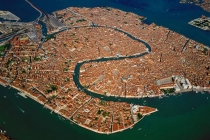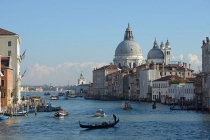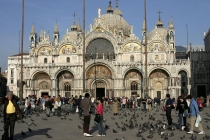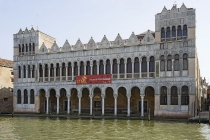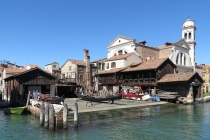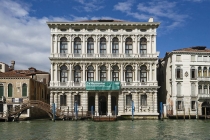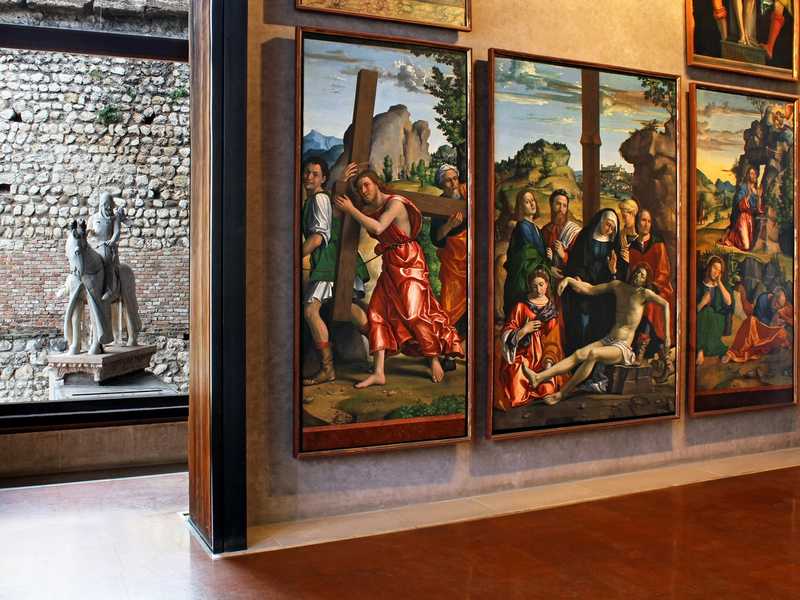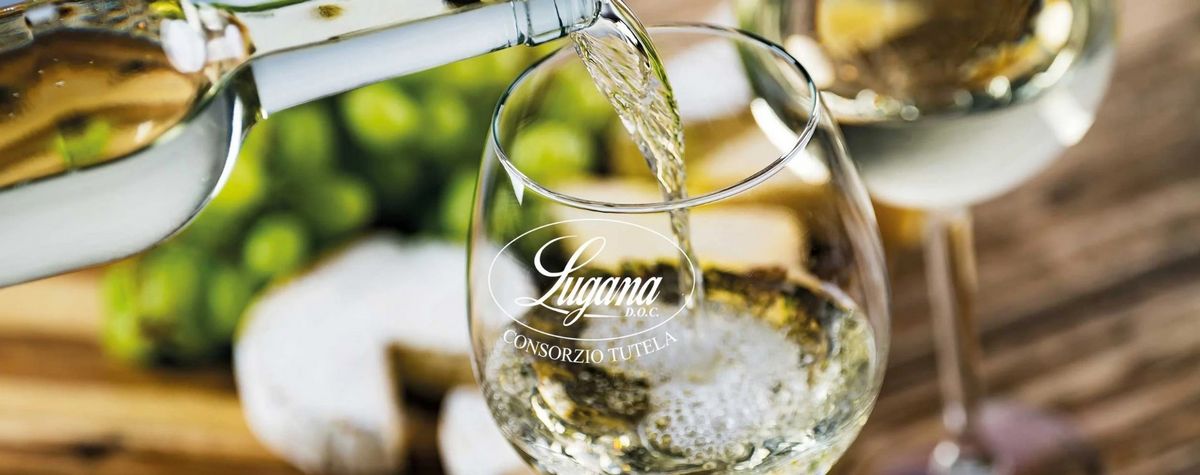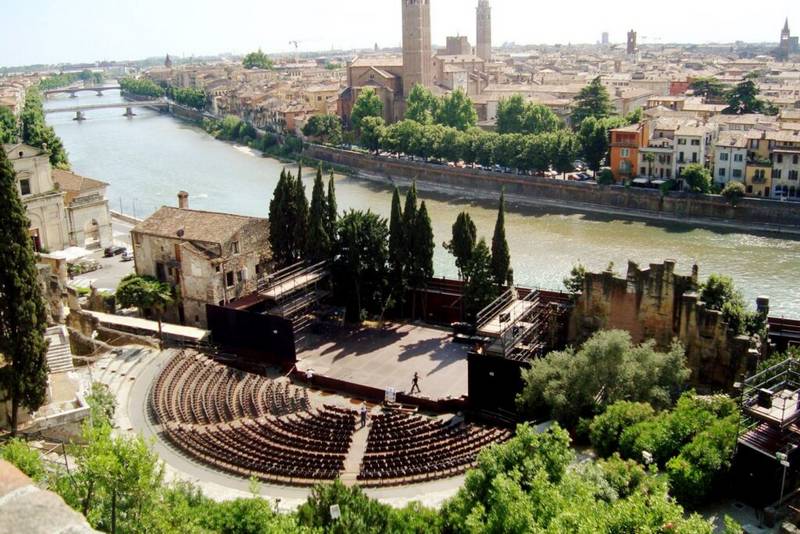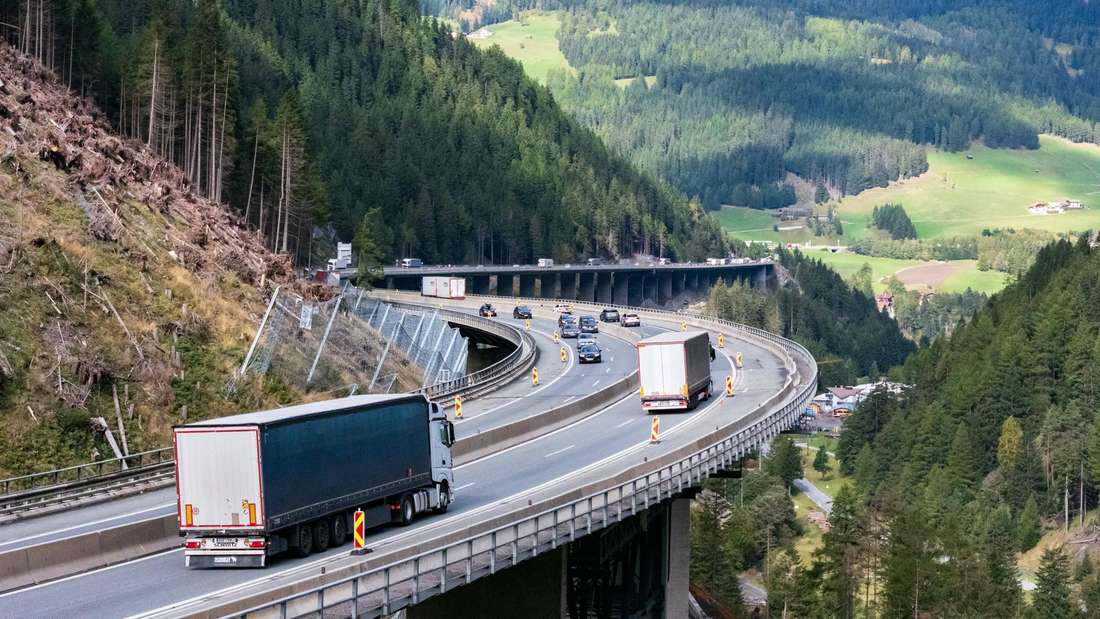Venice is a city in northeastern Italy sited on a group of 117 small islands separated by canals and linked by bridges. It is located in the marshy Venetian Lagoon which stretches along the shoreline, between the mouths of the Po and the Piave Rivers. Parts of Venice are renowned for the beauty of their settings, their architecture, and artwork. A part of the city is listed as a World Heritage Site, along with its lagoon.
Venice is the capital of the Veneto region. In 2009, there were 270,098 people residing in Venice’s comune (the population estimate of 272,000 inhabitants includes the population of the whole Comune of Venezia; of whom around 60,000 live in the historic city of Venice (Centro storico); 176,000 in Terraferma (the mainland), mostly in the large frazioni (roughly equivalent to “parishes” or “wards” in other countries) of Mestre and Marghera; and 31,000 on other islands in the lagoon). Together with Padua and Treviso, the city is included in the Padua-Treviso-Venice Metropolitan Area (PATREVE), with a total population of 2,600,000. PATREVE is only a statistical metropolitan area without any degree of autonomy.
The name is derived from the ancient Veneti people who inhabited the region by the 10th century BC. The city was historically the capital of the Republic of Venice. Venice has been known as the “La Dominante”, “Serenissima”, “Queen of the Adriatic”, “City of Water”, “City of Masks”, “City of Bridges”, “The Floating City”, and “City of Canals”.
The Republic of Venice was a major maritime power during the Middle Ages and Renaissance, and a staging area for the Crusades and the Battle of Lepanto, as well as a very important center of commerce (especially silk, grain, and spice) and art in the 13th century up to the end of the 17th century. This made Venice a wealthy city throughout most of its history. It is also known for its several important artistic movements, especially the Renaissance period. After the Napoleonic Wars and the Congress of Vienna, the Republic was annexed by the Austrian Empire, until it became part of the Kingdom of Italy in 1866, following a referendum held as a result of the Third Italian War of Independence. Venice has played an important role in the history of symphonic and operatic music, and it is the birthplace of Antonio Vivaldi.
Gallery
Video
Links
http://www.veneziaunica.it/de
http://de.turismovenezia.it/
How to get to Venice
The Menapace hotel is located in Pai, in the municipality of Torri del Benaco, in the province of Verona, in the Veneto region.
Capital of our region is Venice.
The guest who stays here with us, can reach Venice quite easily in some ways:
– with own car
Pai> Garda> Affi (Highway A22 Brennero-Modena)
in the direction of Verona to the intersection with the A4 motorway (Milan-Venice)
– with train
Peschiera del Garda station, trains passing almost every hour.
Peschiera can be reached by car or by bus (almost every hour).
– with the excursion bus
We book the service, the bus stops in front of the hotel
both on the outward and on the return journey. Service including tourist guide.
– by bus (Lake Garda – Venice)
The Verona Transport Company ATV offers a scheduled bus service connecting our lake shore to the city of Venice.
The service is available from the end of May to the beginning of October on Tuesday, Wednesday, Thursday and Friday.
Departure from Pai at 7.40 – return to Pai at 19.55.
The round-trip price Euro 40.00.
You can buy it online at atv.linkavel.com
Reservation required.
More infos under ATV-Verona
We gladly provide all the information about it.
Credits
Credits
Text:
https://de.wikipedia.org/wiki/Venedig
Images:
Ca’_Rezzonico_(Venice).jpg
Ca’ Rezzonico.jpg
Von Didier Descouens – Eigenes Werk, CC-BY-SA 4.0, https://commons.wikimedia.org/w/index.php?curid=25203928
Canal Grande
Canal Grande
Wolfgang Moroder.
CC BY-SA 3.0, https://commons.wikimedia.org/w/index.php?curid=23198817
Venedig Altstadt
Venice_Old_Town_Lagoon_Aerial_View.jpg
Von Horst-schlaemma – Eigenes Werk, CC0, https://commons.wikimedia.org/w/index.php?curid=26068345
Venezia_Canals_by_Horst_Michael_Lechner.jpg
Venezia_Canals_by_Horst_Michael_Lechner.jpg
Von Horst Michael Lechner – Eigenes Werk, CC BY-SA 3.0, https://commons.wikimedia.org/w/index.php?curid=20642079
Rialto_Gondoliers.jpg
Rialto_Gondoliers.jpg
Von Saffron Blaze – Eigenes Werk, CC BY-SA 3.0, https://commons.wikimedia.org/w/index.php?curid=15374420
Venice_-_St._Marc%27s_Basilica_01.jpg
Venice_-_St._Marc%27s_Basilica_01.jpg
Von Nino Barbieri – Eigenes Werk, CC BY-SA 2.5, https://commons.wikimedia.org/w/index.php?curid=1863357
Basilica_di_San_Giorgio_Maggiore_a_Venezia.jpg
Basilica_di_San_Giorgio_Maggiore_a_Venezia.jpg
Von This Photo was taken by Wolfgang Moroder.
Eigenes Werk, CC BY-SA 3.0, https://commons.wikimedia.org/w/index.php?curid=26219590
Fondaco_dei_Turchi.jpg
Fondaco_dei_Turchi.jpg
Von Didier Descouens – Eigenes Werk, CC-BY-SA 4.0, https://commons.wikimedia.org/w/index.php?curid=15819937
Gondola_boatyard_San_Trovaso_Venice_1.jpg
Gondola_boatyard_San_Trovaso_Venice_1.jpg
Von aconcagua (Diskussion) – Eigenes Werk, CC-BY-SA 4.0, https://commons.wikimedia.org/w/index.php?curid=39481356

